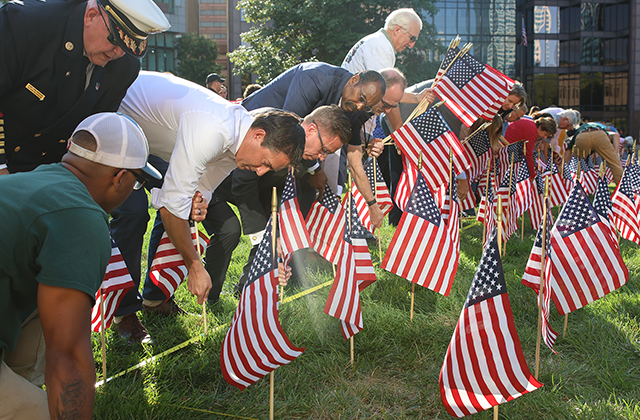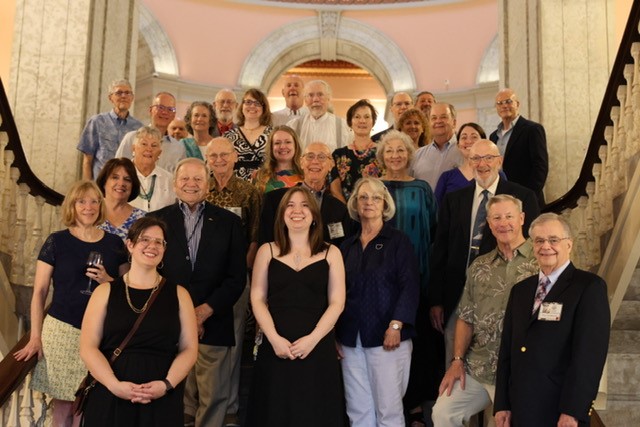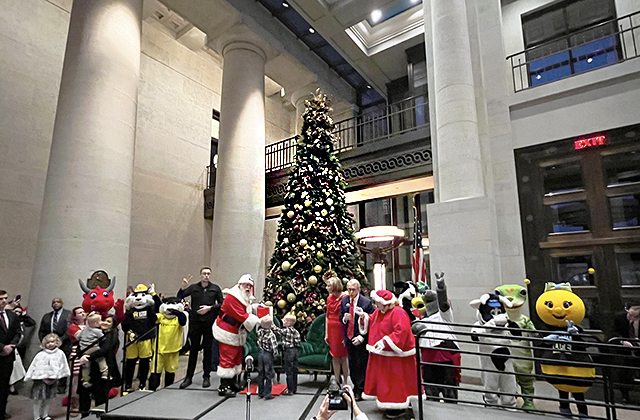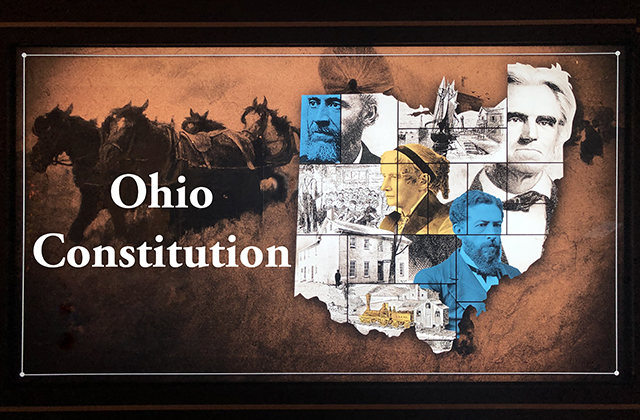About
Visit
Museum
Photos
Video
News
Events
Veterans exhibit on display in South Light Court.
Capitol Cafe is open Monday-Friday



BATTERY A

Bloomfield Letters
Click date to view letter
| September 1861 | January 1862 | April 1862 |
| October 1862 | March 1863 | May 1863 |
| June 1864 | December 1864 | Index |
Alpheus S. Bloomfield from Stark County, Ohio enlisted in the United States service on September 25, 1861, served as a private in Battery A, First Regiment Ohio Volunteer Light Artillery throughout the war, and was discharged on the 31st of July, 1865. He was assigned as a caisson driver, or in other words a supply wagon driver, a position he held throughout the war.
The letters were written to his mother and father, brothers and sisters. The collection also contains an occasional letter from friends and family. Bloomfield's sister Ella collected and preserved the letters. The letters contain Bloomfield's exploits, experiences, and musings, as well as, the tedium and mundane realities of life as a soldier.
His letters read like a nineteenth century travelogue. Bloomfield paints rich word-pictures of his journeys and of the land, weather, crops, communities and people he encounters, commenting on them from his perspective as a farm boy from northern Ohio. Relating his daily activities, he writes about his daily routine, duties, drill, and his varied forms of entertainment. In one letter, he discusses the practice of drawing or foraging-an activity he states that some of his family might consider to be stealing.
Bloomfield's heartfelt letters convey the author's great devotion to family, kindred, and country. Letter writing and reading comprised the mainstay of Bloomfield's entertainment, and he constantly encouraged his younger brother and sisters to continue their education. It could be said he wrote them so frequently to ensure that they would benefit educationally from the experience.
Bloomfield also records the engagements and conflicts in which his unit participated and provides us with a private's perspective and understanding of those particular events. He relates an occasion in which he was almost captured and tells of his illness and lengthy recovery in an army hospital. He writes with great candor about his experiences with and the abilities of those who were his superiors. Finally, he keeps detailed records of his unit's issuances, including tents, clothing, equipment, and food.
In 1893, almost seventy years before the emergence in historical writing of the common-man genre, Bloomfield's son described the importance of these particular letters:
I believe that these letters would be of unique interest to myself and possibly others. . . . Here the acts and thoughts of the individual are expressed, and one is brought into closer relations with the actors and events. Perhaps the thoughts and deeds of individuals are not always to be admired or imitated, but they are, nevertheless, that which gives the chief charm to history, and it is a concerted act of individuals that determines the action of state and nation. We have numerous biographies of our great warriors and statesman; we have numerous histories of great events wherein statesmanship and heroic valor are lauded; of those who, by the course of events or by superior ability, have won a place in written history. We too often forget that great power, THE PEOPLE, makes history.
We owe a great debt of gratitude to Bloomfield's family for their conservation of these letters and for their foresight as to their importance. Bloomfield's letters are an exceptionally rich resource especially for those interested in the history of the common man and in social and cultural history. They would be of great interest also to those interested in the American Civil War, as historians, students, and re-enactors.
Joel Flint
Researcher and Curator
The Ohio Statehouse
 Flags for 9-11 in 2025
Flags for 9-11 in 2025 2025 Volunteer Appreciation Dinner
2025 Volunteer Appreciation Dinner America 250-Ohio
America 250-Ohio Holiday Festival and Tree Lighting 2024
Holiday Festival and Tree Lighting 2024 Holiday Santa Photos 2024
Holiday Santa Photos 2024 2024-11-03 Olympic and Paralympic Celebration
2024-11-03 Olympic and Paralympic Celebration Ohio Constitution Videos
Ohio Constitution Videos Ohio Statehouse Videos
Ohio Statehouse Videos






